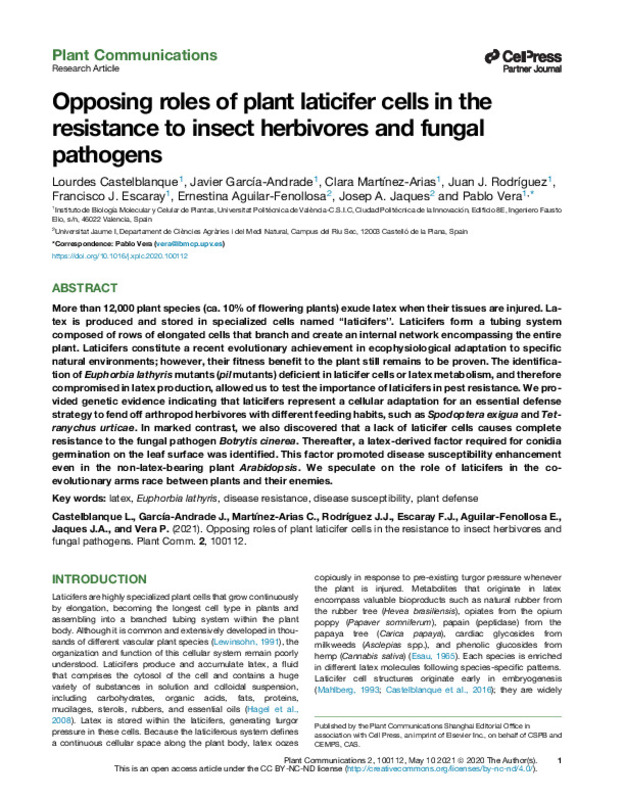JavaScript is disabled for your browser. Some features of this site may not work without it.
Buscar en RiuNet
Listar
Mi cuenta
Estadísticas
Ayuda RiuNet
Admin. UPV
Opposing roles of plant laticifer cells in the resistance to insect herbivores and fungal pathogens
Mostrar el registro completo del ítem
Castelblanque, L.; García-Andrade, J.; Martínez-Arias, C.; Rodríguez, JJ.; Escaray, FJ.; Aguilar-Fenollosa, E.; Jaques, JA.... (2021). Opposing roles of plant laticifer cells in the resistance to insect herbivores and fungal pathogens. Plant communications. 2(3):1-15. https://doi.org/10.1016/j.xplc.2020.100112
Por favor, use este identificador para citar o enlazar este ítem: http://hdl.handle.net/10251/189530
Ficheros en el ítem
Metadatos del ítem
| Título: | Opposing roles of plant laticifer cells in the resistance to insect herbivores and fungal pathogens | |
| Autor: | García-Andrade, Javier Martínez-Arias, Clara Rodríguez, Juan J. Escaray, Francisco J. Aguilar-Fenollosa, Ernestina Jaques, Josep A. | |
| Entidad UPV: |
|
|
| Fecha difusión: |
|
|
| Resumen: |
[EN] More than 12,000 plant species (ca. 10% of flowering plants) exude latex when their tissues are injured. Latex is produced and stored in specialized cells named "laticifers''. Laticifers form a tubing system composed ...[+]
|
|
| Palabras clave: |
|
|
| Derechos de uso: | Reconocimiento - No comercial - Sin obra derivada (by-nc-nd) | |
| Fuente: |
|
|
| DOI: |
|
|
| Editorial: |
|
|
| Versión del editor: | https://doi.org/10.1016/j.xplc.2020.100112 | |
| Código del Proyecto: |
|
|
| Agradecimientos: |
|
|
| Tipo: |
|









